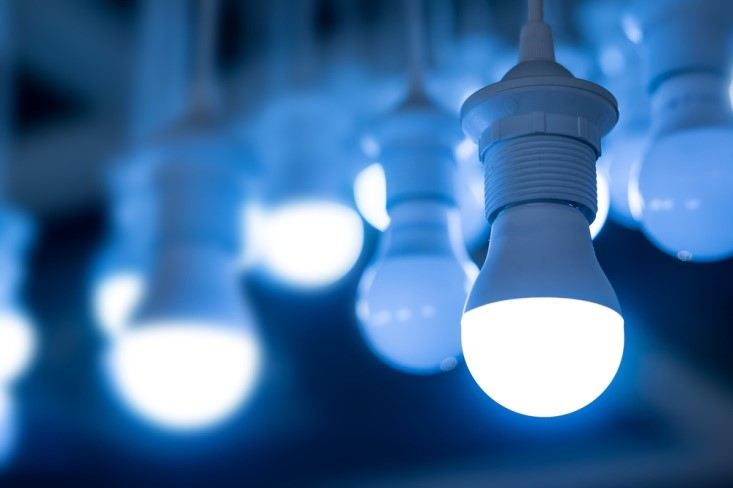Why LED Is Lighting the Way for the IoT Revolution
Even just a few short years ago, LED lighting was largely viewed as something that would be nice to have, but wasn’t exactly practical for widespread use, due in large part to the cost. Well, the so-called “LEDrevolution” is over, and light emitting diode lighting is the clear winner. From industrial plants and city sidewalks to home appliances and holiday decorating, LED lighting is now more common than the incandescent and fluorescent lights we all knew in the past.
 |
| (Image: Shutterstock) |
There are a number of advantages to LED lighting. The efficiency and duration of the lights — the typical bulb can last anywhere from 25,000 to 100,000 hours depending on wattage and heat settings — are typically the top selling points, but LED offers several other advantages as well. They light up more quickly, come in a wider variety of sizes, and are available in more colors without filters than typical bulbs.
They are also less fragile, and more flexible in terms of brightness, than traditional lightbulbs, making them a more cost-efficient option in many applications. In fact, while the cost of LED lights was a major drawback in the past, the initial cost has lowered considerably, and when the lifetime operating cost is taken into consideration, the lights have a much lower cost of ownership than older style lights.
All of these advantages are considerable when you are looking at lighting options for industrial or consumer applications, but what really pushes LED lighting into the realm of revolutionary is the key role that it plays in the Internet of Things. Some might even argue that LED is the linchpin that will bring the entire IoT to life and allow it to reach its potential.
Control and Data
 |
| (Image: Shutterstock) |
LED lights are inherently friendly to digital controls, due to being a low-voltage semiconductor device. This makes them well suited to connect with Microchip microcontrollers, unlike older light sources, which are both high voltage and analog. In short, LED devices are more easily combined with the sensors and microprocessors that are required to create a “smart” light system.
Now, you might be thinking, “There are plenty of devices that can be made ‘smart’ via sensors and processors. Why is LED lighting so special?” The answer is simple: Lighting is everywhere. We need lighting in homes, businesses, and outdoors, and it’s one of the most significant contributors to energy costs. Other IoT devices are common (heating and cooling, for one) but lighting is required everywhere.
Beyond the idea of energy savings, though, lighting also provides the ideal vantage points from which to gather data about the people and objects being illuminated. For instance, the idea of a motion-activated light isn’t really anything new. You’ve been able to find them in homes and businesses for years, and they save money by turning on and off according to the motion in the space.
However, connected LED lighting can take the idea of motion detection even further. By equipping lighting with sensors and microprocessors, lighting can not only turn on and off, but can collect information about when the lights are used, and in some cases, use heat signatures to detect how many people are in the room. This can be used in large offices, helping the company not only save resources, but design a better working space for employees. When the lights detect patterns of movement, employees can be moved to be in closer proximity to improve productivity, or conference rooms can be reconfigured to make better use of the space.
Connected LED lights in cities can be used in a similar fashion. In addition to lighting that can be remotely controlled, sensors in lights can collect information about noise, traffic, air quality, and more. This data can then be used to develop new solutions, and improve the lives of citizens, while also saving money.
Essentially, it’s the simple ubiquity of lighting that makes LED the forerunner in the LED revolution. Lighting has more endpoints for collecting data than any other type of device, and is often a defining factor in IoT “If This Then That” scenarios. So, while the simple act of switching to LED lights can save money, the benefits gained from the connections it allows will likely prove to be the real money saver.
Post time: Apr-01-2017
